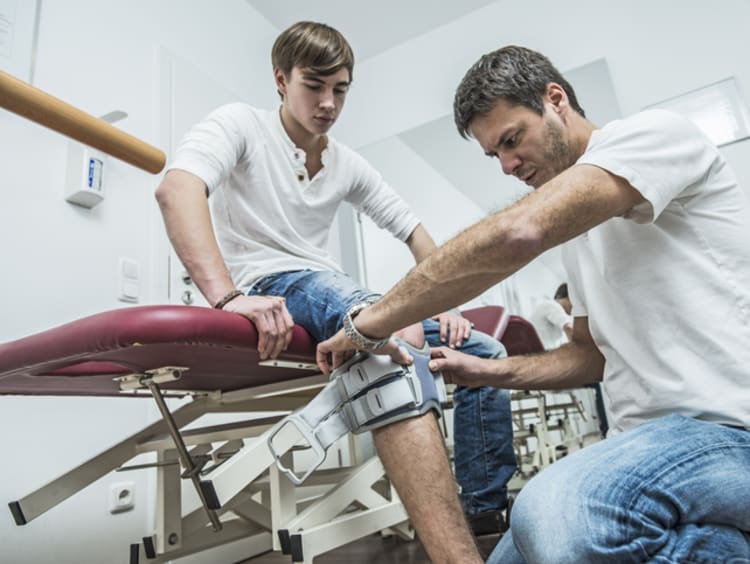Athletic Trainer and Physical Therapist: What Is the Difference?

There are many professionals with widely different specialized skills who work in the health care field, but everybody in the healthcare industry is focused on effective patient care. While some positions in the medical field may seem clearly distinct from all others, that is not always the case for athletic trainers and physical therapists. These roles are similar in the sense that medical professionals in these positions both play a role in injury recovery. However, there are significant differences between these two roles.
Learn More About:
Athletic Trainer
Athletes work with athletic trainers on a regular basis to learn how to prevent injuries. If an injury occurs, the athletic trainer works with a doctor to develop a treatment plan. Earning an athletic training degree can help someone get into this role. An athletic trainer must have a bachelor's degree and usually they need a specific license or certification.
Athletic trainers work during sports events, which means that they may need to work irregular hours outdoors during all types of weather. Beyond using their understanding of biology, anatomy and physiology, athletic trainers communicate regularly with athletes, their coaches and doctors to prevent injuries. Depending on the age of the athlete, athletic trainers may need to work with parents to ensure that treatment is being followed at home. Athletic trainers may also work in medical or training facilities.
Not only do athletic trainers respond immediately to an injury during an athletic event, but they also help to prepare athletes for competitions. They show athletes proper form and train them to use tools that may or prevent injury such as wraps or braces. An athletic trainer must document the injuries of an athlete and show continued improvement so that the athlete can get back to preparing and playing as usual.
Physical Therapist
A physical therapist must earn an advanced degree and obtain licensure to practice physical therapy. Physical therapists can diagnose and treat patients who are injured. They also work with patients who have illnesses that may cause injuries. The goal of the physical therapist is to help patients regain or maintain mobility and recover from their injuries.
A physical therapist often works regular hours in hospitals or offices. While they may have space in a medical office, their set up usually looks quite different from a regular exam room. There are many specialized tools and pieces of equipment that a physical therapist uses to accommodate the mobility needs of their patients. Physical therapists are usually very hands-on and may assist patients physically while they are completing their treatment.
After a physical therapist diagnoses the patient's condition, they work to create a treatment plan. While the patient is completing movement exercises, the physical therapist is monitoring that progress to look for issues with mobility. The physical therapist assesses if the assigned exercises are helping improve the issue and may continue to modify the treatment plan as they monitor progress.
Responsibilities in Athletic Training and Physical Therapy
Physical injury is the focus for both athletic trainers and physical therapists. An athletic trainer specifically works with athletes. A physical therapist, on the other hand, may work with any patient who has been injured or is dealing with an illness that impacts their physical well-being. Another key difference is that athletic training includes preventing future injuries while physical therapy is generally focused on recovery. In addition, a physical therapist may practice independently while an athletic trainer often works with other medical professionals to diagnose issues and create treatment plans. Whichever route you choose, these are two rewarding careers with many opportunities.
Earning a BS in Exercise Science with an Emphasis in Sports Performance or a BS in Biology with an Emphasis in Pre-Physical Therapy could serve you well if you decide to earn an advanced degree in physical therapy. Consider enrolling in these degree programs with Grand Canyon University’s College of Nursing and Health Care Professions.
The views and opinions expressed in this article are those of the author’s and do not necessarily reflect the official policy or position of Grand Canyon University. Any sources cited were accurate as of the publish date.


